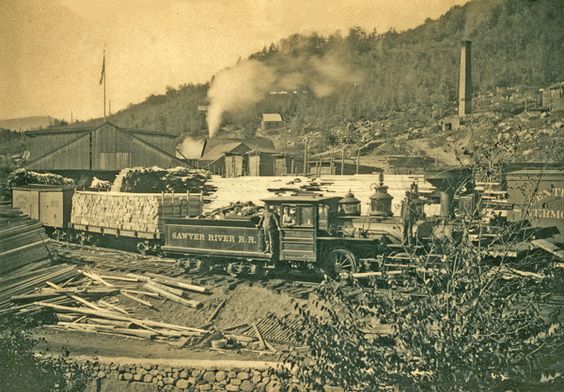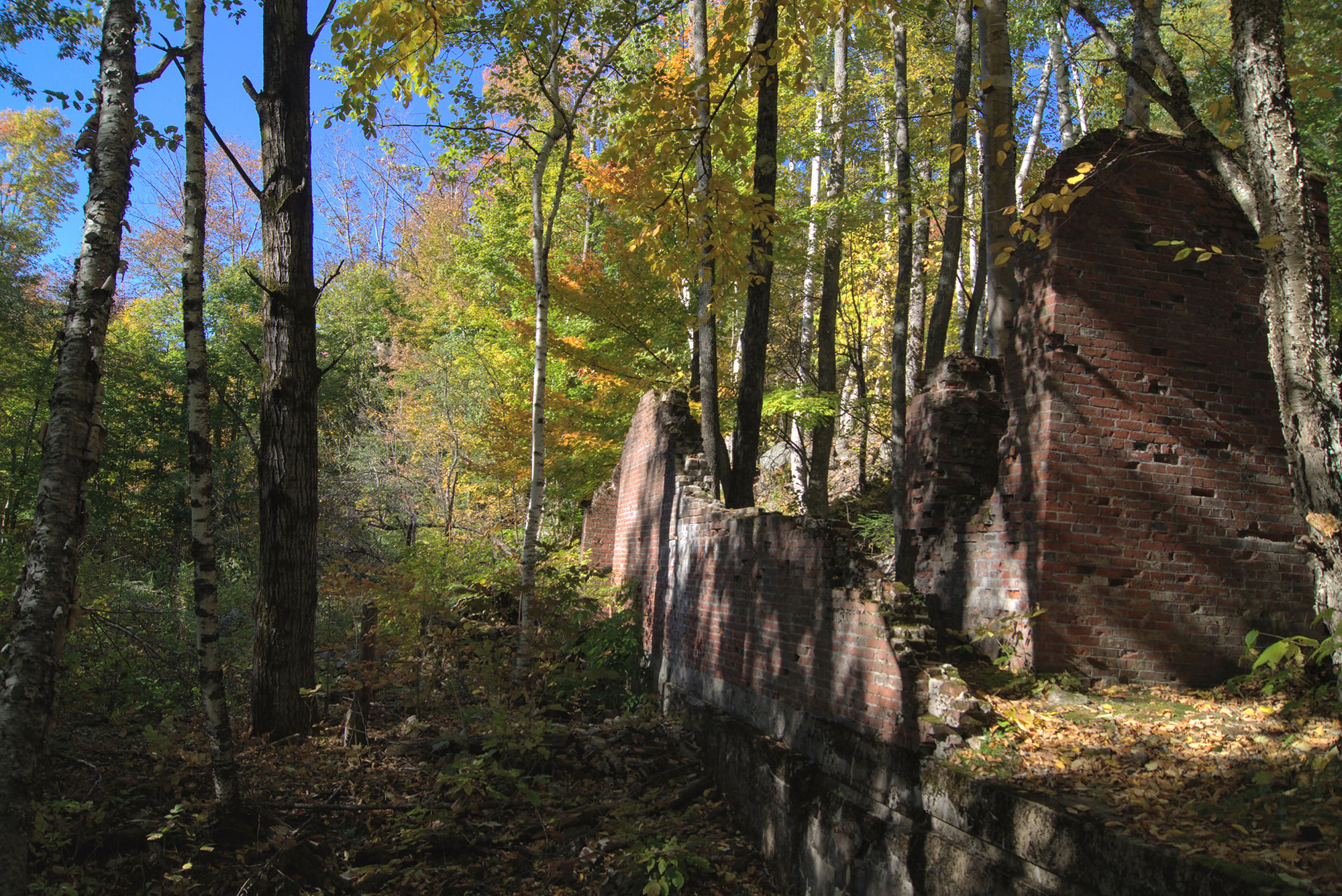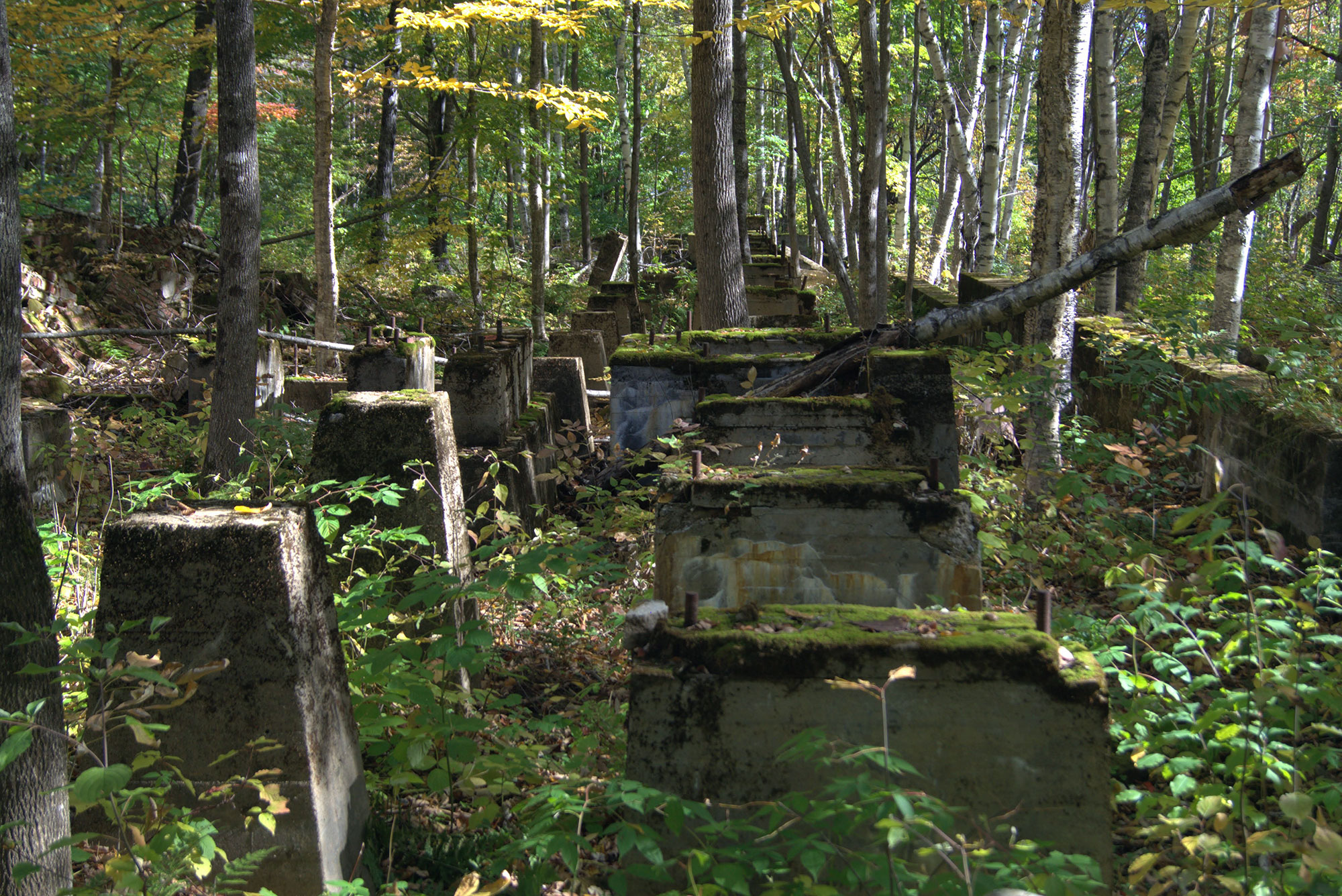Did you know that there are ghost towns in the White Mountains? The best known of them is Livermore. Incorporated in 1876, it was a thriving logging town for 50 years before fire, flooding, and deforestation led to the community’s abandonment. Today, exploring the town’s crumbling foundations, stone cellar holes, and still-thriving apple trees is a must-do for any ghost town aficionado or lover of White Mountain history. Easily accessible from Sawyer River Road, mark it as your trick-or-treat destination this Halloween.

Old Livermore
The history of Livermore is deeply rooted in logging—its establishment shortly followed the founding of the Grafton County Lumber Company and the Sawyer River Railroad by the Saunders family. Bounding Waterville Valley, Lincoln, Bartlett, and Albany, Livermore was geographically huge (75,000 acres), comprised mostly of trees that the lumber company intended to harvest.
The community itself, however, was quite small. At its peak in the late 1800s, Livermore was a thriving logging town with a railroad, sawmill, blacksmith shop, post office, school, and 18 homes—along with the Saunders family’s part-time home, a lavish 26-room mansion. By 1890, the town’s population had swelled to 155 residents; The town even encompassed a separate area called “Little Canada.”
But shortly thereafter, Livermore was on the decline. As was the case with many similar towns, fire and floods eventually sealed Livermore’s fate—the sawmill burned down three times in the town’s short history while torrential rains and flooding in 1927 wiped out sections of the railroad and bridges.
Following the flood, the mill closed, all but 12 acres (which are now privately owned) of land were absorbed into the White Mountain National Forest, and the population declined precipitously. Between 1935 and 1937, the Civilian Conservation Corps (CCC) removed the railroad and buildings, leaving behind just the foundations. In 1951, the state legislature revoked Livermore’s charter, leaving the town to be reclaimed by the forest it once was established to log.

Livermore Today
Livermore’s remains are still easily accessed today, just not by railroad. Rather, Livermore is best accessed via Route 302 and Sawyer River Road, just a few miles outside the village of Bartlett. About two miles up Sawyer River Road, just after a modern cabin, is a pull-off. From the pull-off, a short walk downhill toward the Sawyer River leads to the best preserved ruins—most notably the red brick foundation of the powerhouse as well as a broad cement structure that was once the sawmill. On the other side of the road, there are several cellar holes with solid stone foundations which are easily found by looking for the flat spaces on the hillside. A little further up the road is the cement foundation of the community’s school house.
Although this map is not to scale, we found it very helpful as we tramped around the ghost town. Be on the lookout as well for the town’s historic apple trees, which are still—some 100 years later—producing bountiful crops of what are now heirloom apples.

Livermore & Mount Carrigain
Much of the land that once produced the raw material for Livermore’s sawmill is also accessible today. Looking at a map of the Grafton County Lumber Company’s holdings, one quickly notices many familiar 4,000-footers—most notably the Bonds, Hancocks, and Twins. However, one mountain feels particularly entertwined with Livermore: Mount Carrigain.
The most obvious reason for the association of Mount Carrigain with Livermore is that the most popular route to the mountain’s summit—Signal Ridge—is accessed via Sawyer River Road. In fact, many unaware hikers have probably driven right past the remnants of Livermore on the way to the mountain, oblivious to the region’s rich history and fascinating historical site. The other reason for the linking of these two entities is that Livermore locals explored Mount Carrigain on early AMC-sponsored trips using the railroad line for access, as written about in an 1879 edition of Appalachia, the AMC’s journal of mountaineering and conservation.

Other New Hampshire Ghost Towns
Livermore is the best known of the White Mountain ghost towns, but there are plenty more for the interested hiker. We even discovered what appeared to be a cellar hole on a recent off-trail excursion on the way to Guy’s Slide. If you’re looking to explore other abandoned towns in the area, Passaconway is a great place to start; Russell-Colbath House is conveniently located on the Kancamagus Highway and is now run as a museum by the United States Forest Service. Another interesting site is the remains of Thornton Gore—a town that, during the late 1800s, consisted of 26 homes, a school, a church, and a mill—which is located off of Tripoli Road near Russell Pond Campground (It’s an awesome trip to tack onto a hike of the Osceolas).
Have you visited one of the White Mountains’ ghost towns before? If so, tell us your best tips and must-visit places in the comments below!
Tim Peck and Doug Martland
Tim and Doug met long ago at the Eastern Mountain Sports in Canton, Massachusetts. Bonding over a love of slick Quincy Quarry granite, White Mountain sufferfests, and scheming up adventures while folding tee-shirts, today Tim and Doug collaborate to write about their favorite outdoor activities and occasionally get nostalgic about tee-shirt tables.
Related Posts
April 12, 2024
Explore Like a Local: The Outdoor Mecca of North Conway, NH
There's a lot to love about this New…
April 3, 2024
5 Things To Do in the Boston Area During Mud Season
Adventure opportunities are abundant…




